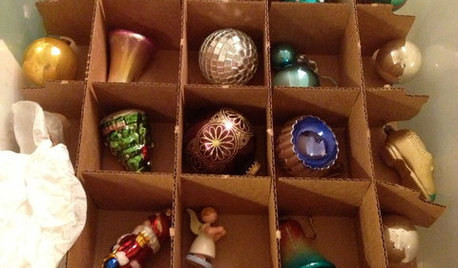I have an old Huskee B3912-230 (TSC 4420105) with a 12hp B&S 280707 type 0411-02 ... Had some problems with starting it last summer that turned out to be a bad ignition switch, after replacing the solenoid (no go) and then the switch. Then had to replace the top part of the starter (the head and gear on top of the pinion shaft that engages the flywheel) when IT cracked cranking the engine after the switch was replaced. Finally got it running, hallelujah.
Then this spring, after replacing the battery and charging it up, started fine and was mowing, all of a sudden ran into fuel feed problems; would start and run for about 5-10 seconds then die. Suspected fuel line or carb probs so changed the filter, checked the cap, took off the carb bowl and cleaned it out, poked the orifices I could see, etc etc and got it running again. Yay again. Got the yard mowed once.
THEN, after turning it off then trying to restart, the starter started acting erratic, balking when you turned the key, ie would crank the engine half a turn or two then quit, or the gear would spin but the shaft would not pop up and engage the gear with the flywheel, and generally seemed like the engine was hard to turn at a certain point when you tried to turn it by hand. Compression was fine when trying to turn the opposite direction, I think. Shot some WD-40 down the starter shaft and this seemed to take care of the sticking symptoms so that the starter wasonce again engaging the flywheel. BUT....still seemed hard to turn over, so figured ok, maybe I drained the battery trying to crank the starter over and over (in short tries) and it is not getting enough juice. So I charged up the battery and tried it again... and NOW all I got was a click at the turn of the key; headlight position on the switch showed headlights were getting current.
SO, my first thought was bad solenoid, and since the starting trouble last year ended up being the starter switch and not the solenoid, or so I thought, and I still had the old solenoid, I thought ok, let's just try swapping out the solenoids. The "new" (last year's replacement) solenoid I was taking off looked like it got fried at one of the large posts (I THINK it was the battery post); the plastic housing had melted up around the bottom of the post a bit so i figured that had to be part of the problem...maybe I burned it up trying to crank the sticky starter. BUT the mower is old enough that the replacement solenoid as identified in the manual was no longer available and had been replaced by a new one that looked slightly different. So when putting back the original solenoid I found myself not entirely sure which large cable went to which post but thought the small starter terminal was closest to the battery post so hooked it up that way...
So got it all hooked up and checked all the other connections (safety switches etc.) as best I could, then got on and turned the key...NOTHING, not even a click. Current to the headlights briefly then nothing. Checked the fuse between ig. switch and solenoid; it had blown. So I thought hmmm maybe I hooked it up backwards at the solenoid and that made the fuse blow so switched the cables, got a new fuse and tried it again, same thing, blew the fuse. So now I really have no idea which cables go on which solenoid post, although I DO have a schematic and drawing of the wiring for the tractor in the manual...should have looked at that for the re-installing old solenoid...duh...I am afraid I may have shorted out the ignition switch by hooking it up backwards or messed up the charging module or something when the fuse blew...now what.
SO...did actually find a solenoid that is said to be equivalent to the original solenoid (NOMA 53716) and looks like the one in the manual, and while I am waiting for that to arrive, wondering if there is anything else that could have caused the replacement solenoid to melt down, other than repeated short cranking intervals and a hard-to-turn engine, or could it be the battery? The wiring harness looks ok from what I can see and inspect, no bad wires visible, no corroded connectors, all tight. I WAS able to jump the starter from the battery (+) and it responded (attempted to engage the flywheel) but I don't like sparks and did not hold it long enough to crank it to start, heh. So figured likely not the starter. Same reason I did not want to jump the solenoid, but figured if the starter cranks bypassing the solenoid and current is getting thru the ignition switch to the headlights plus the original click problem from the replacement solenoid before swapping back to the old original solenoid, then it must be the solenoid...so maybe BOTH solenoids are bad, which I am hoping is the case.
I know this is a very long post and apologize for that but am also aware thru reading a lot of other posts trying to find a solution that any number of things could be a part of the problem...mainly just want to get the electrical circuit fixed to see if indeed the starter does need replacing, or if it is an engine valve or crankshaft problem....or battery! I have devoted far too much of my time to fiddling with this machine every season trying to maintain it and keep it running...since we have a lot of lawn and can't afford a new one, but now I know just about all there is to know about it too, LOL.
Any thoughts on the blown fuse? It has never done this and not sure of the direction of the current or other possible factors that would cause it to blow... thanks for any help anyone can offer!!
Sue in KS















walt2002
mownie
Related Professionals
Reading Landscape Architects & Landscape Designers · Prairie Ridge Landscape Architects & Landscape Designers · Berkley Landscape Contractors · Blue Springs Landscape Contractors · Clark Landscape Contractors · Farmington Landscape Contractors · Hickory Hills Landscape Contractors · Hollywood Landscape Contractors · La Verne Landscape Contractors · Lewisville Landscape Contractors · Lyndhurst Landscape Contractors · Northport Landscape Contractors · Overland Park Landscape Contractors · Pompton Lakes Landscape Contractors · Tamalpais-Homestead Valley Window ContractorskssueOriginal Author
kssueOriginal Author
mownie
kssueOriginal Author
mownie
kssueOriginal Author
kssueOriginal Author
mownie
kssueOriginal Author
walt2002
mownie
kssueOriginal Author
walt2002
walt2002
kssueOriginal Author
kssueOriginal Author
mownie
kssueOriginal Author
mownie
kssueOriginal Author